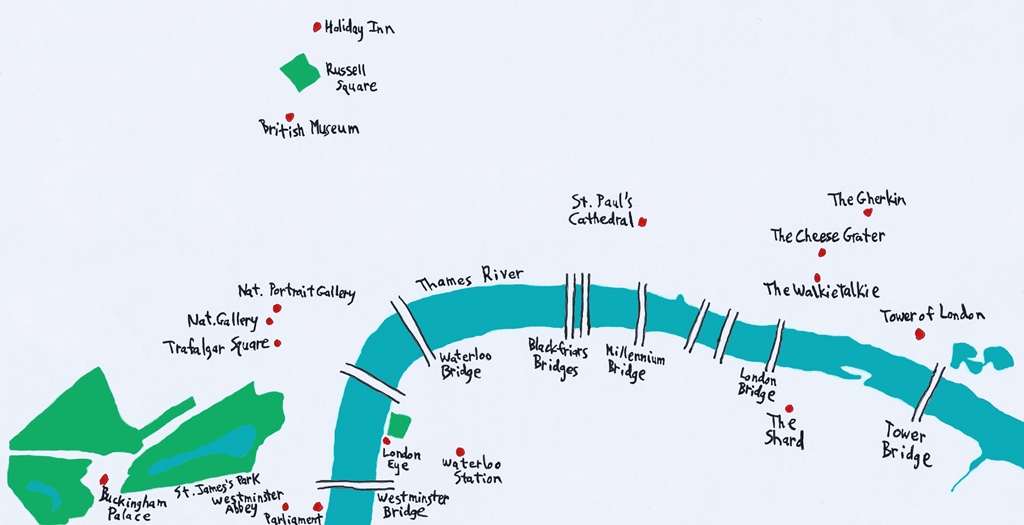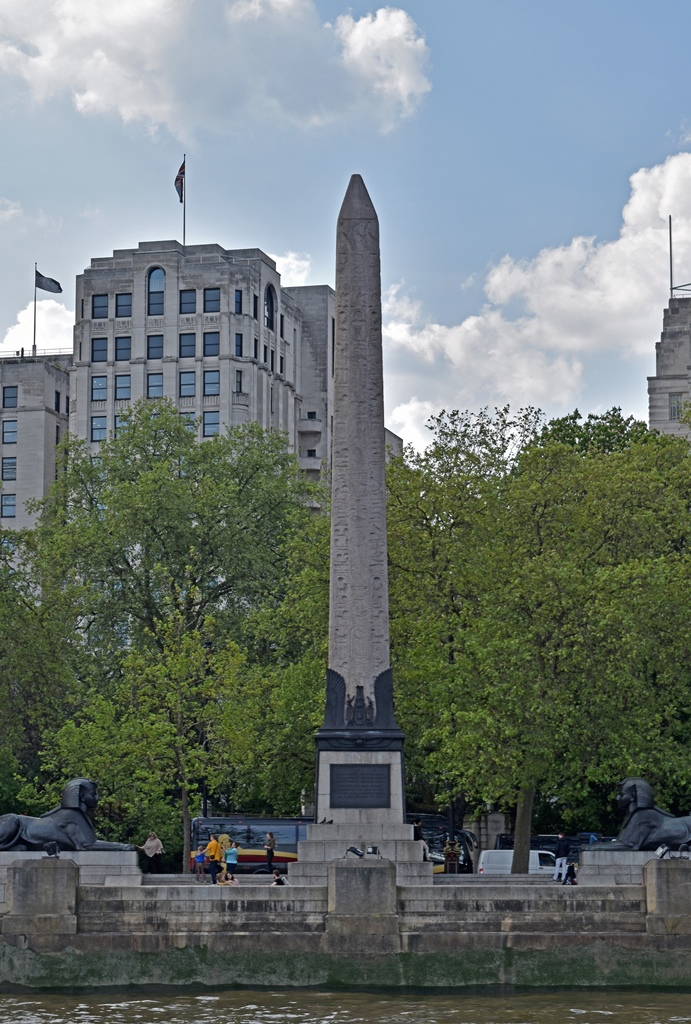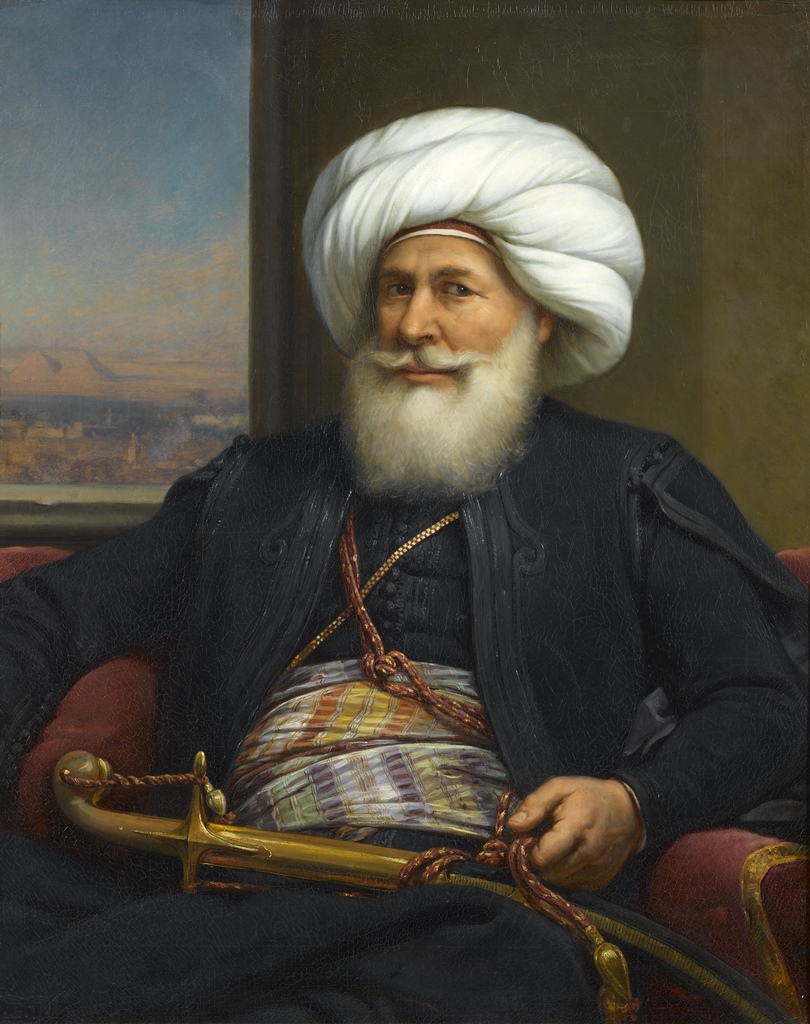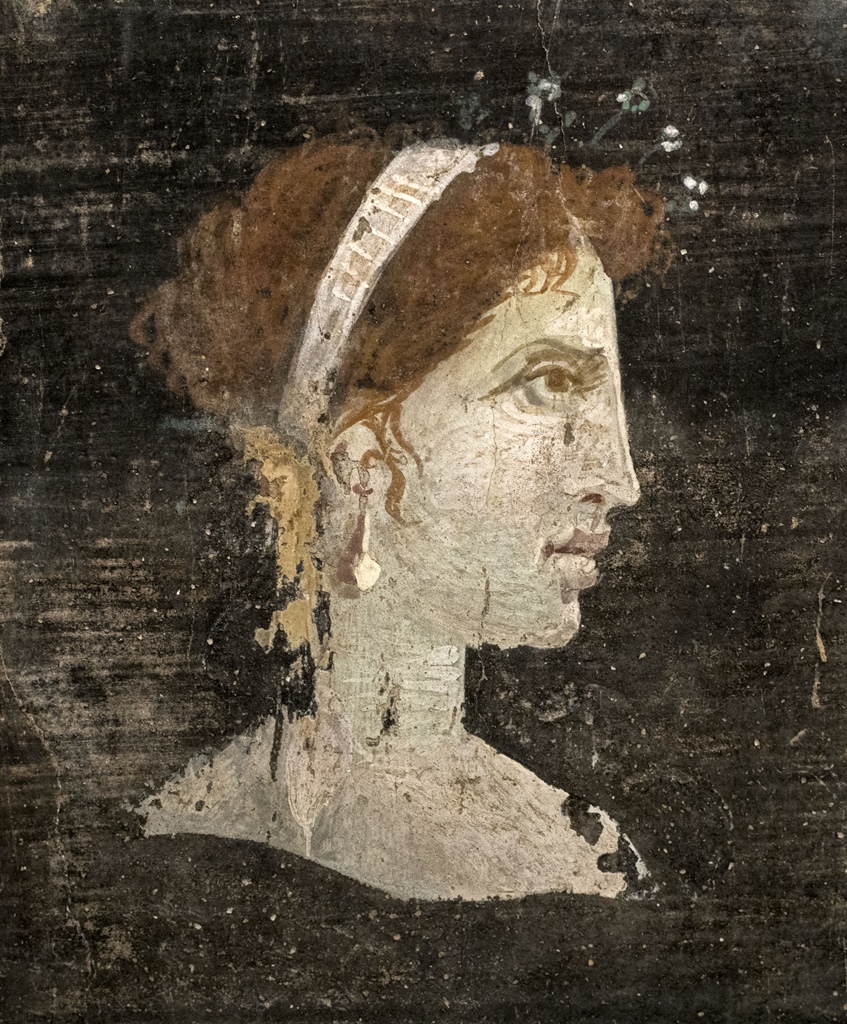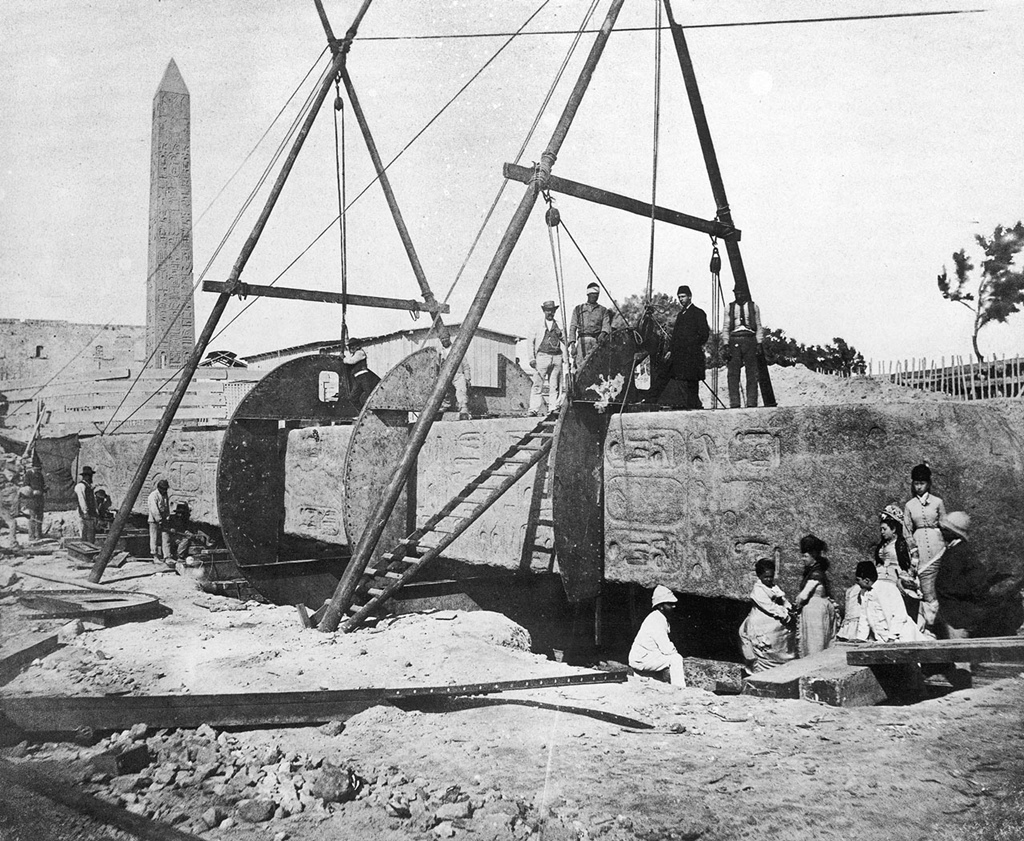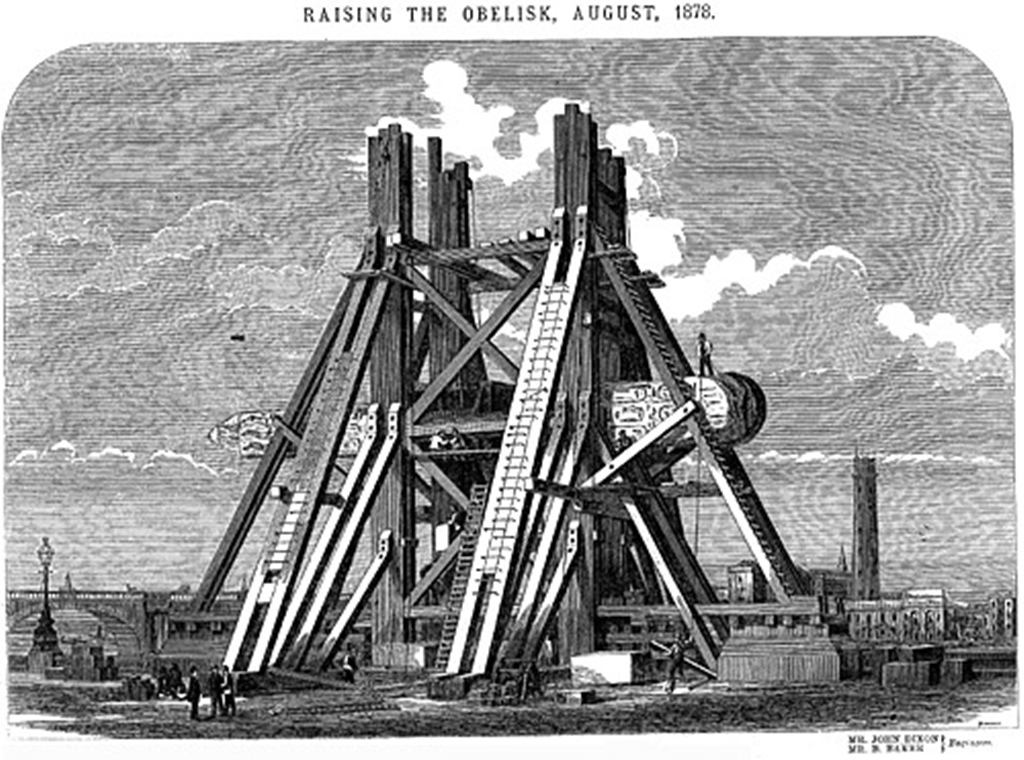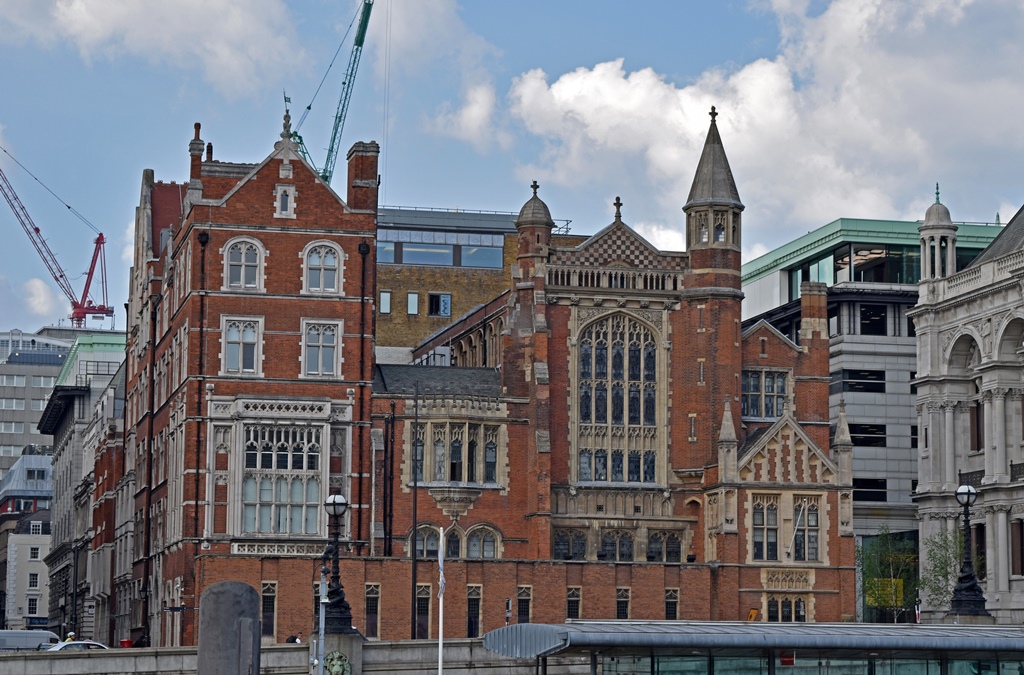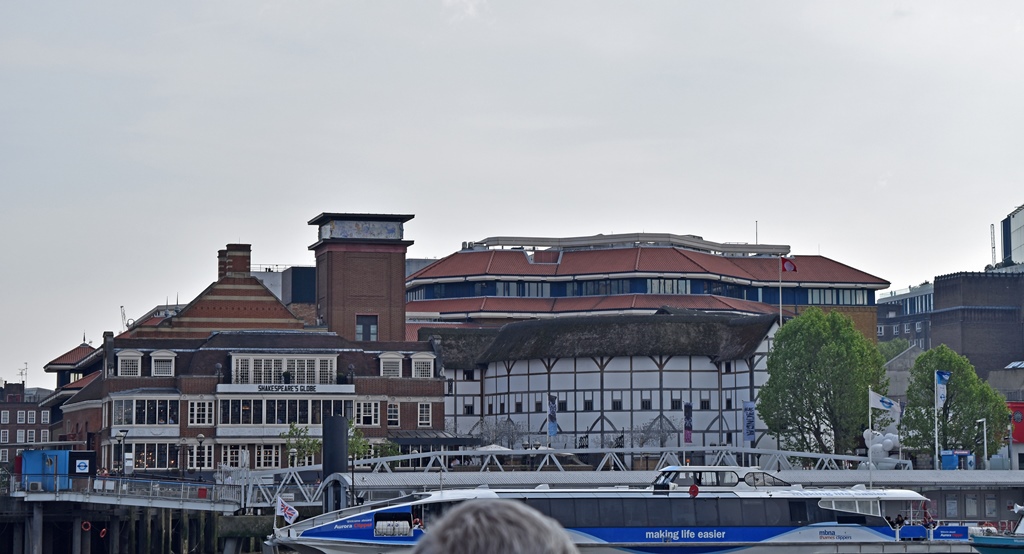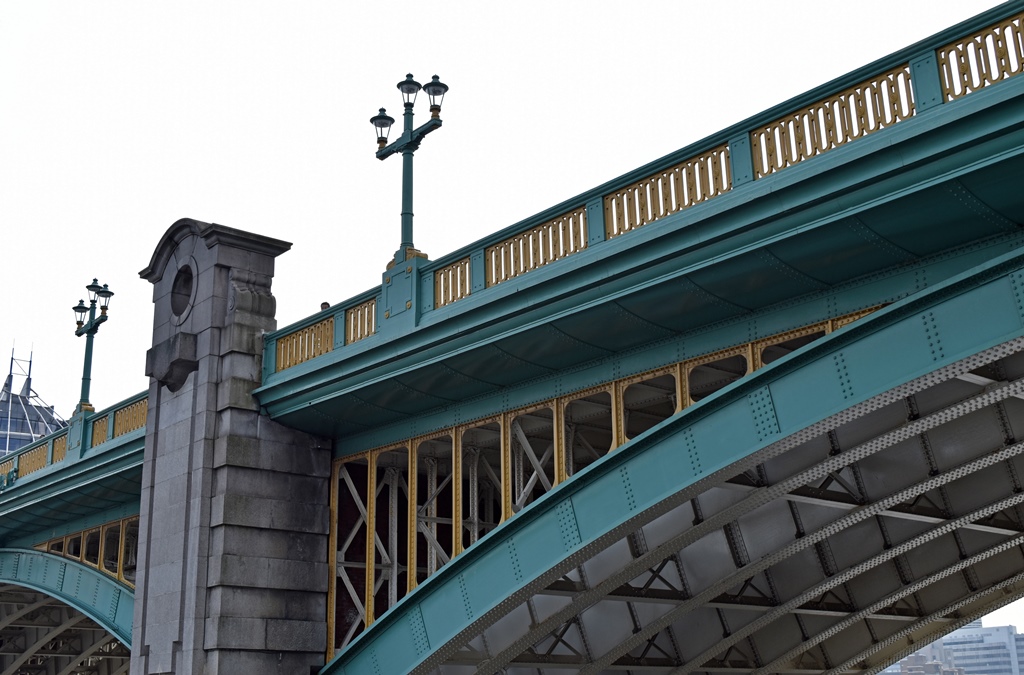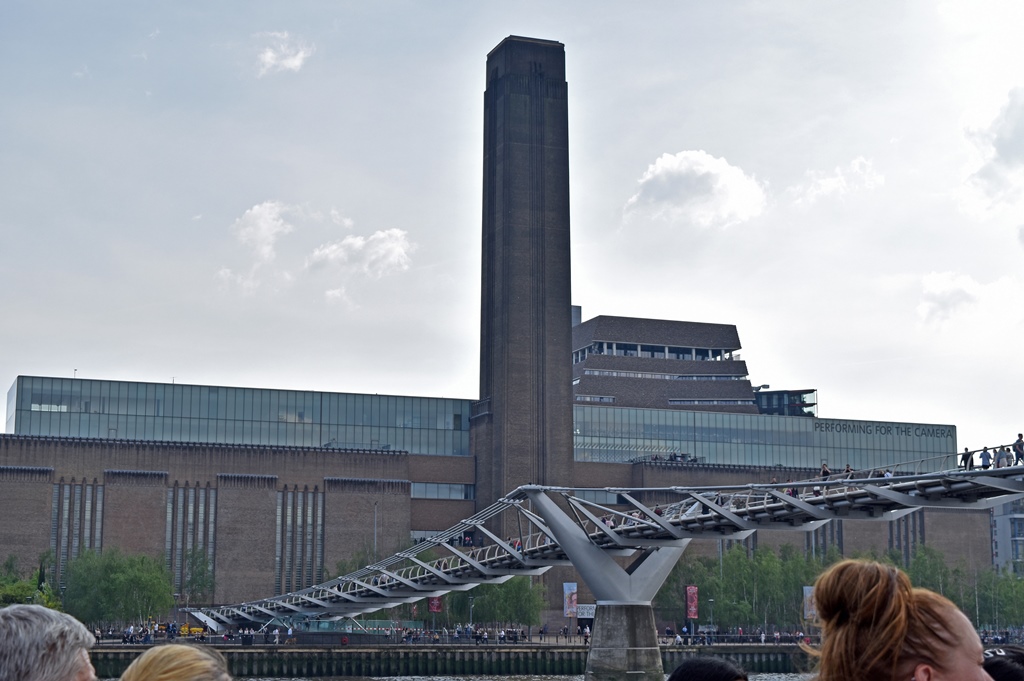When we bought our tickets to ride on the London Eye, we got combo tickets that also
included a boat tour on the exotic Thames River, as floating up and down the Thames
sounded like a fun thing to do and would give us a quick overview of the parts of the
city around the river. The tour route started at a dock in front of the London Eye
itself and passed downstream through central London, all the way to a point past
Tower Bridge, where it made a U-turn and retraced back to its starting point.
Tour Route
Between our London Eye adventure and our boat tour, we'd crossed the river to visit
Westminster Abbey, leaving us at the wrong end of Westminster Bridge as our tour time
approached. But our tour time wasn't really approaching that quickly, so we actually
had plenty of time to re-cross the bridge and even to grab a quick fish-and-chips
lunch at the County Hall on the way to the dock.
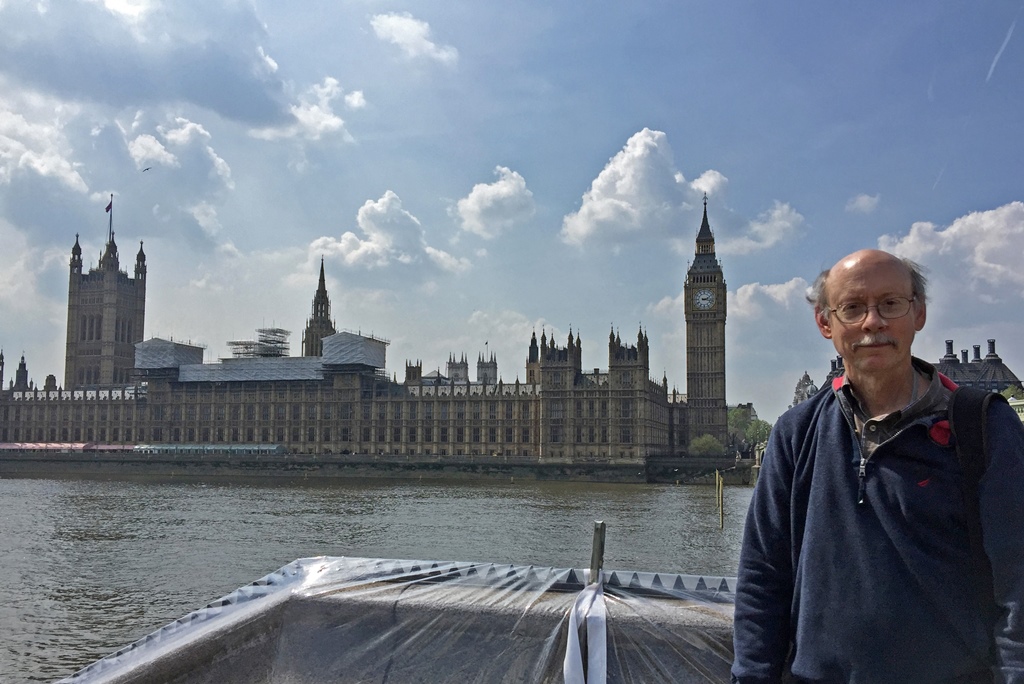
Bob and Houses of Parliament
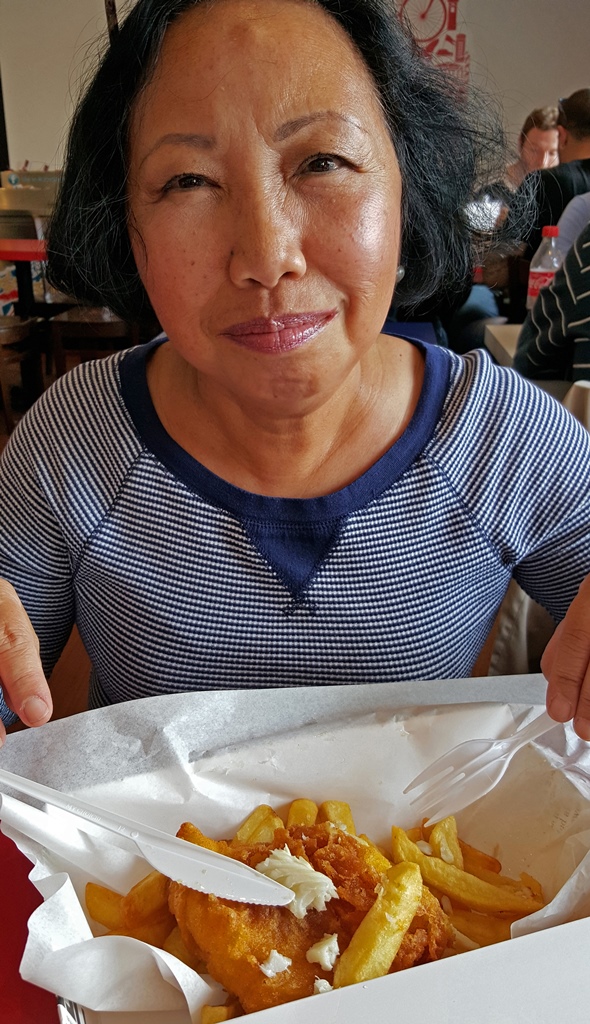
Nella with Fish and Chips
The dock was reached by way of a walkway just past the London Eye.
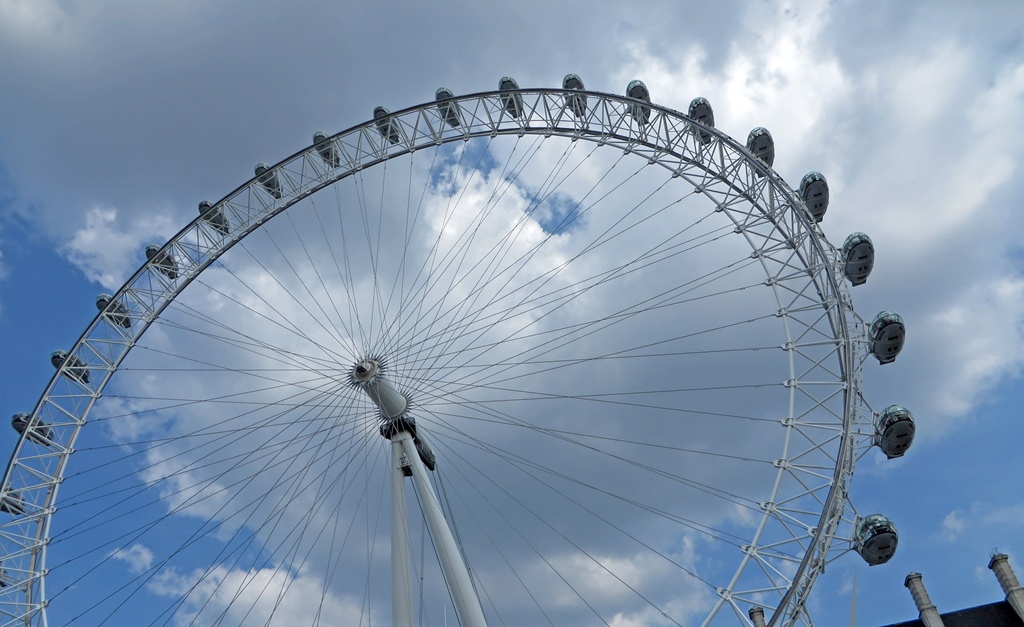
The London Eye
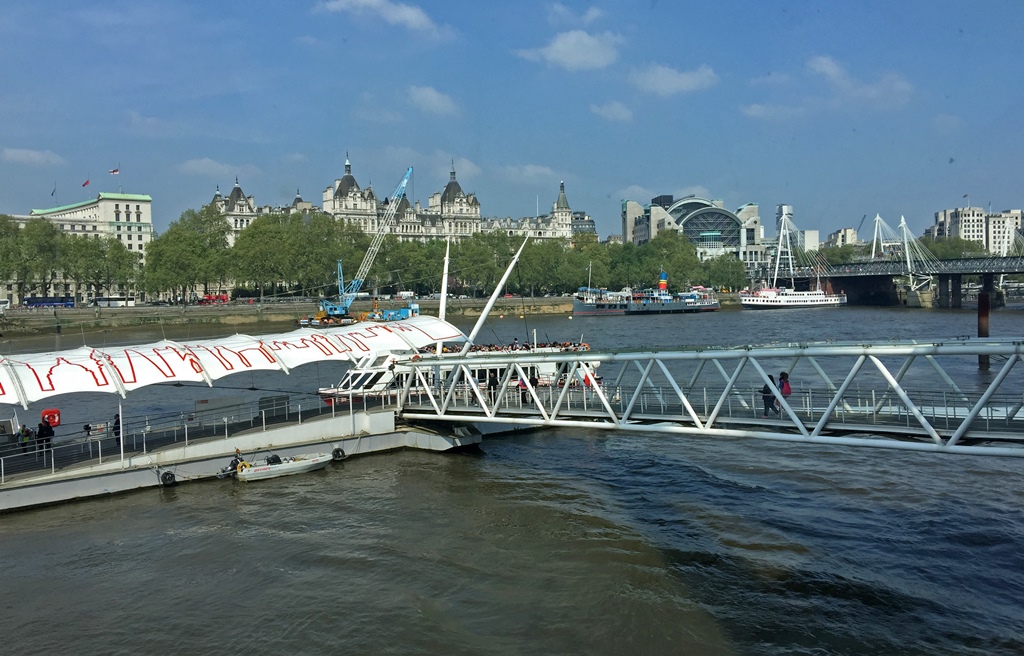
Floating Dock and Walkway
We boarded the boat and found seats, which were open to the elements. We were
blessed with good weather – I'm not sure whether they cancel tours when it's rainy,
or if everybody just gets wet. The boat pulled away from the dock, and we were
surprised when it started heading upstream instead of downstream. We passed under
Westminster Bridge and found ourselves with an excellent view of the Houses of
Parliament, which we figured to be the point of our short trip upstream.
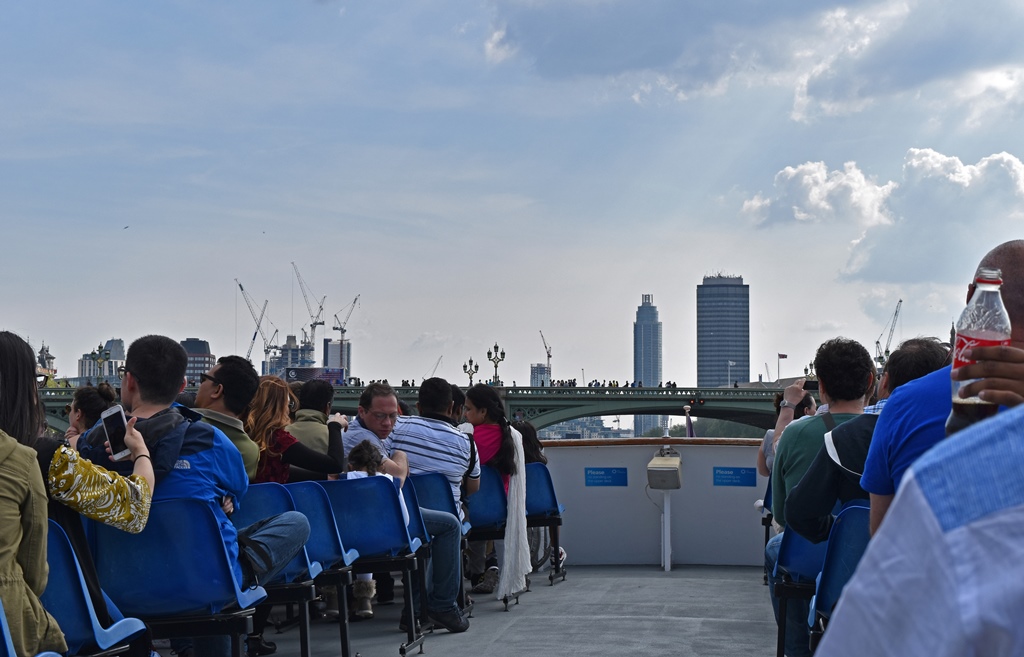
Tourists on Boat
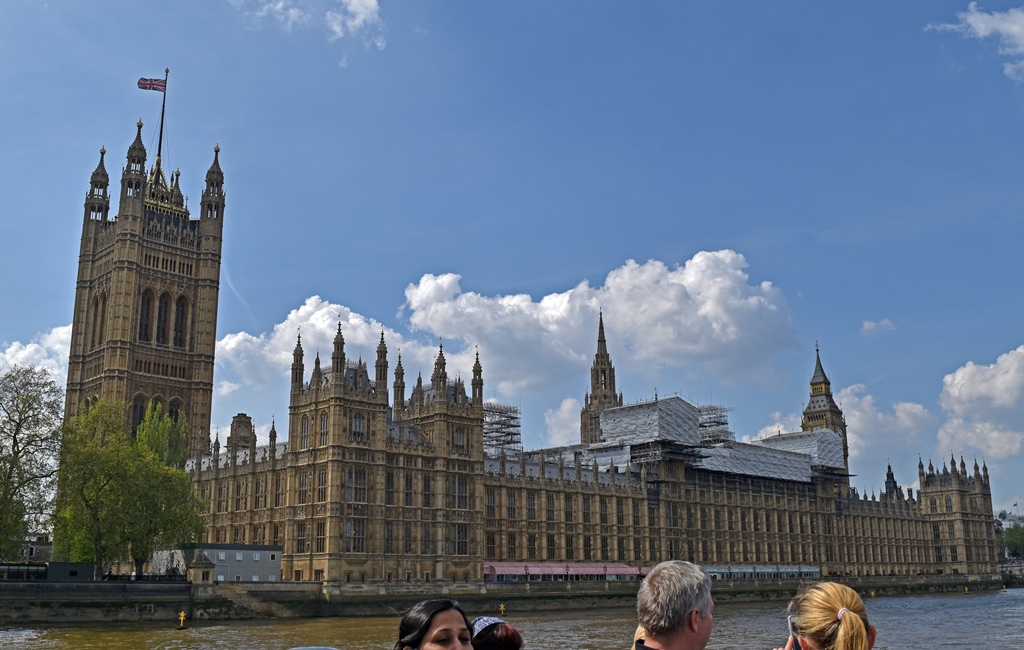
Houses of Parliament
After getting just past the Houses, we reversed course and headed back toward Westminster
Bridge, which we again passed underneath on our way downstream and toward the main body
of the tour. On the way, we passed the London Eye, where tourists were undoubtedly
looking down at us as specks on the water.
The London Eye (0:27)
We passed under the Golden Jubilee Bridges we'd been looking down at when we'd
ridden the London Eye a couple of hours earlier and came to a place where the river
curved to the right, becoming a west-to-east river again, a direction it would
maintain (more or less) for the rest of its way to the North Sea. On the left bank
of this bend in the river we noticed something that looked like an Egyptian obelisk.
Cleopatra's Needle
This was indeed an Egyptian obelisk, a gift from Muhammad Ali. Not the boxer – as far
as I know, he never owned any Egyptian obelisks – but the Ottoman governor of Egypt
and the Sudan, who presented the obelisk to Britain in 1819 in commemoration of
Britain's defense of Egypt from French forces in the Battle of the Nile (1798) and the
Battle of Alexandria (1801).
Muhammad Ali
The obelisk has come to be known as Cleopatra's Needle, but it never really had much
to do with Cleopatra. It was first erected in Heliopolis (a bit to the northeast of
present-day Cairo) by Thutmose III around 1450 BC, more than a thousand years before
Cleopatra was born, and was moved by the Romans to Alexandria in 12 BC, 18 years
after her death. The Romans set the obelisk up by a temple that had been built by
Cleopatra during her reign, this being the obelisk's only connection with the famous
queen.
Cleopatra
Ali included one condition with his gift: the Brits would have to come and get
it. Sometime after the obelisk had been set up by the Romans, it had fallen
over and partially buried itself, where it stayed, protected from the elements,
for many centuries. The obelisk is 69 feet tall and weighs 224 tons, and
the British, while grateful for Ali's gesture, knew an expensive recovery and
transportation headache when they saw one, and postponed picking it up until
1877. At this time a wealthy anatomist named Sir William James Erasmus Wilson
took it upon himself to bring the obelisk to Britain, and applied money and the
finest in 19th Century engineering to the problem.
The Needle Being Prepared for Transport
But a storm in the Bay of Biscay cared nothing for Wilson's plans, and six crew
members died and the obelisk was nearly lost as a result. After a tense delay and
more money, the Needle was eventually manhandled the rest of the way to London, and
it was finally set up in its present location in 1878.
Needle being set up on the North Bank
We passed under another bridge, called Waterloo Bridge, and eventually in the
distance we could see the iconic dome of St. Paul's Cathedral. St. Paul's is
visible from a considerable distance, as it's 365 feet tall (it was the tallest
building in London until 1967). It was designed by Sir Christopher Wren in the
late 17th Century and was completed in 1711. There is a lot of history in the
building, some of which will be explored in a future web page.

St. Paul's Cathedral (0:24)
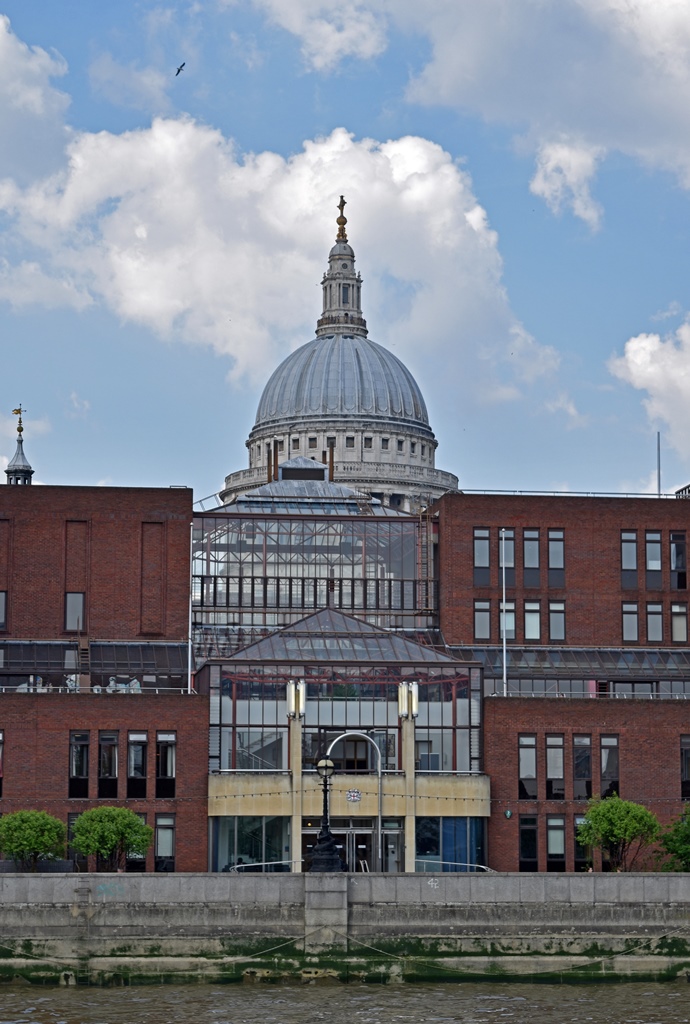
St. Paul's Cathedral
London is full of old buildings, many of which are not particularly iconic but
remain interesting nevertheless. Here's one between Waterloo Bridge and the
next bridge:
Building West of Blackfriars Bridge
The next bridge is actually two bridges, with the remains of a third between them.
The two bridges are Blackfriars Bridge and Blackfriars Railway Bridge. There used
to be another Blackfriars Railway Bridge, but it eventually became too weak to
support modern trains and was demolished in 1985. However, some of the support
columns for the old bridge remain, painted red.
Blackfriars Bridges (0:42)
Beyond Blackfriars Bridge on the right bank is a building called Shakespeare's
Globe Theatre. This is a reconstruction of the original Globe Theatre, in which
William Shakespeare's theater company frequently performed, and where many of his
plays had their debuts. But the original Globe was not in this location – the
theater itself is long gone, but part of its foundation was discovered in 1989,
and it's about 750 feet downstream from the reconstruction.
Shakespeare's Globe Restaurant and Theatre
Near the site of the original Globe there is a pub called The Anchor, and a succession
of pubs on this site were frequented by many famous Brits over the centuries (our tour
guide mentioned Shakespeare, Pepys and Dickens, and if you add their friends and
acquaintances, there were no doubt many others). In the distance beyond The Anchor
is a building visible from an even greater distance than St. Paul's. This is The Shard,
at 1,016 feet the tallest building in the United Kingdom. The building was completed in
2012 and has many tenants – offices, restaurants, apartments and a hotel, among others.
And it has the highest observation deck in the UK on its 72nd floor, 801 feet above the
ground.
The Shard and The Anchor (0:40)
Beyond The Anchor and sandwiched between two nondescript brown buildings is a
full-sized replica of Sir Francis Drake's ship, The Golden Hind, on which he
sailed around the world between 1577 and 1580, wreaking extremely lucrative havoc on
Spanish shipping (at the behest of Elizabeth I) along the way. And shortly after
The Golden Hind, we passed under another bridge which didn't appear to be all
that interesting. But this was London Bridge, and while the present London Bridge
just opened in 1973, there have been several London Bridges on this spot, going back
to Roman times. For centuries, London Bridge was the only way to cross the Thames
in London, other than by boat. The London Bridge preceding the current one is now
in Arizona, where it crosses a portion of Lake Havasu, famous for Spring Break
hedonism.

The Golden Hind and London Bridge (0:53)
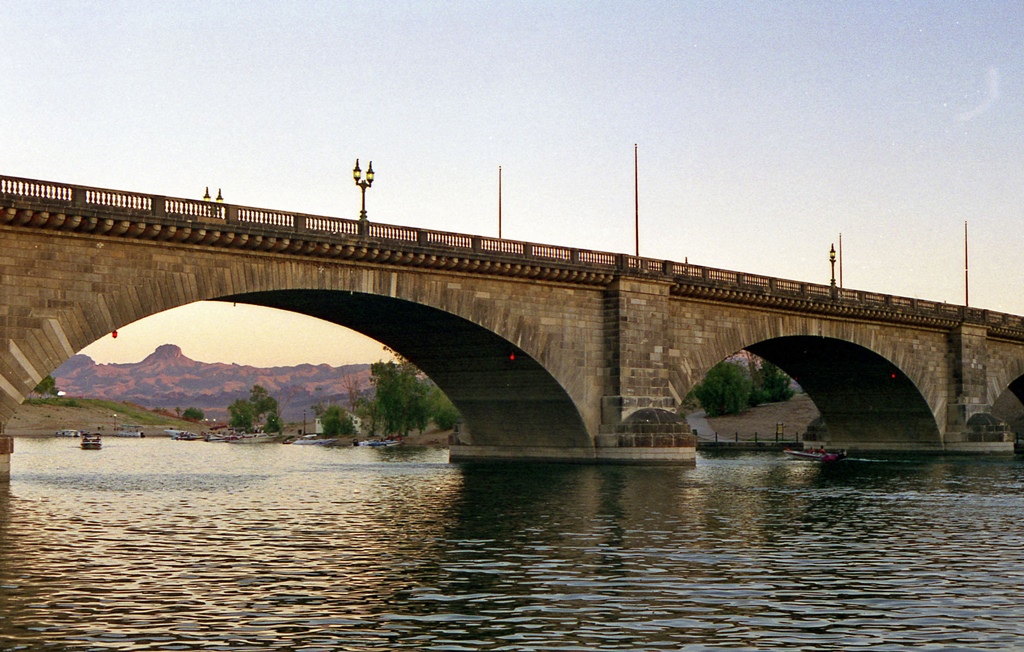
London Bridge, AZ (1997)
On emerging from underneath London Bridge, we could see the next bridge downriver,
the much more interesting-looking Tower Bridge. As we got nearer to Tower Bridge,
we could see a modern beehive-looking building on the right bank that turned out
to be the London City Hall. This building was completed in 2002 and is the
headquarters of the Greater London Authority, which is the governance body of
Greater London (not to be confused with the City of London, which is the
non-borough "borough" of London's origins and which has its own headquarters; see
the introductory London page for an attempt at explaining all this).
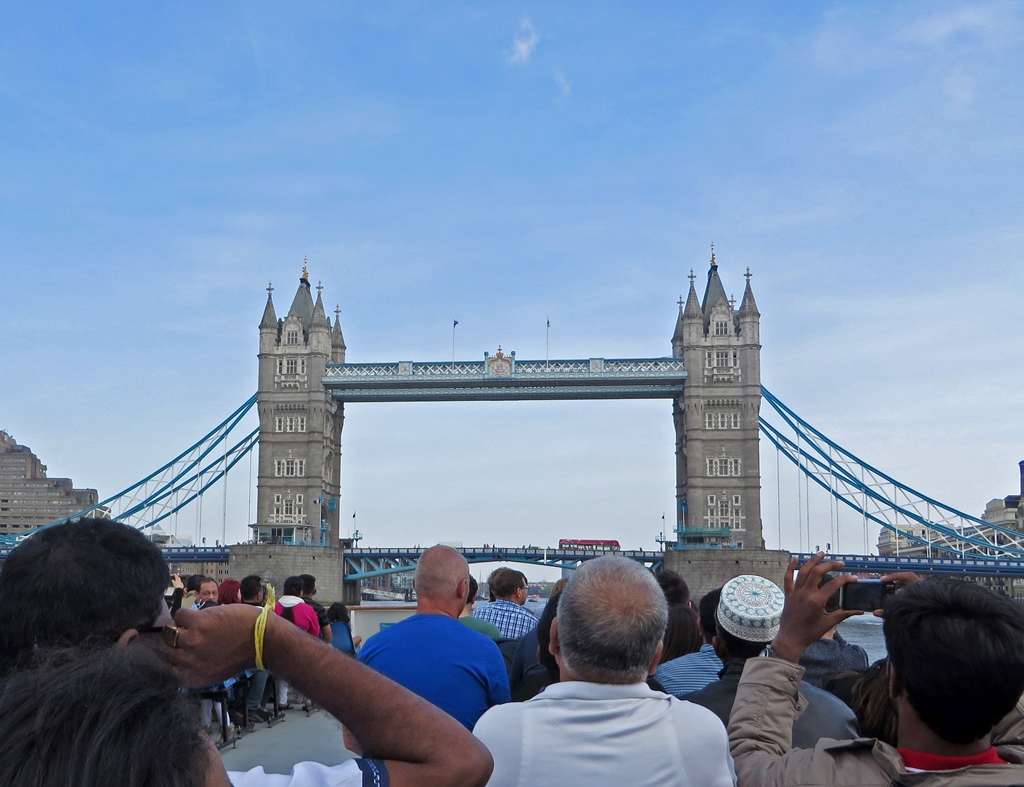
Tower Bridge
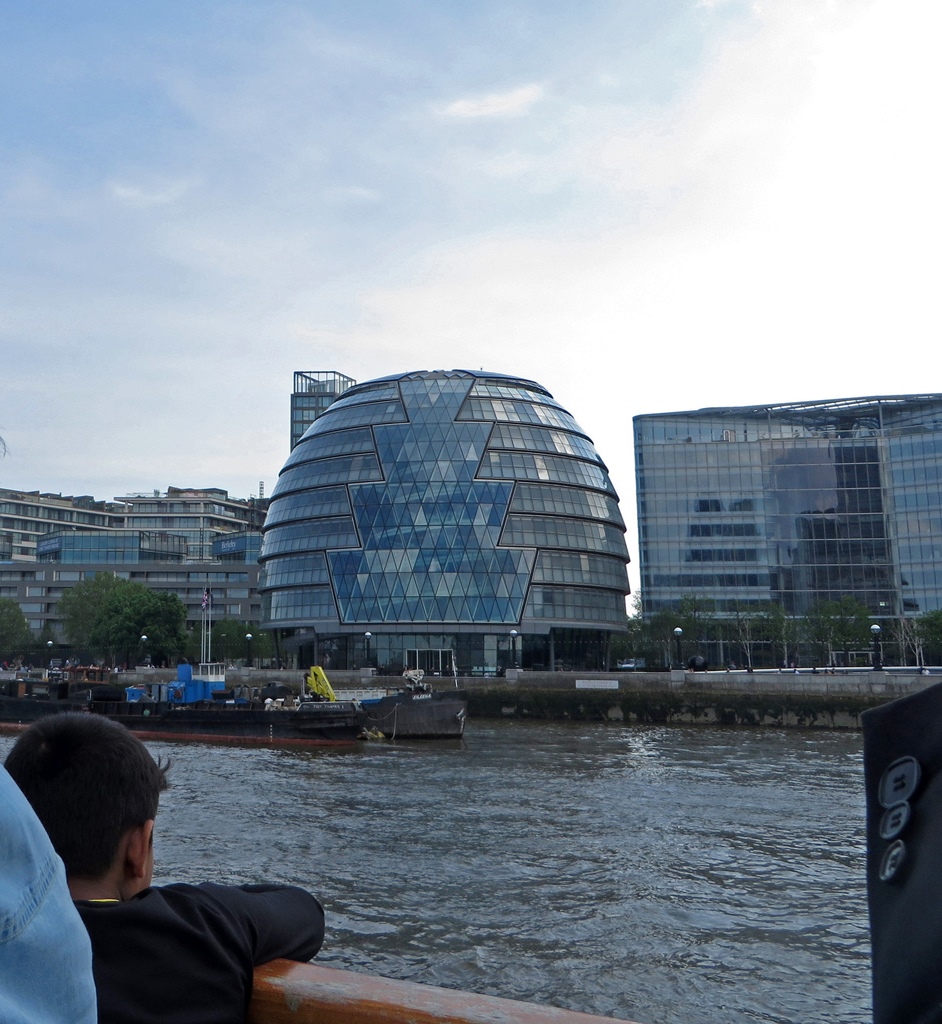
City Hall
On the left bank, directly across the river from the City Hall, is the fabled
Tower of London, which is emphatically not modern. It's not really a tower,
but a royal palace complex (surrounded by two walls and a moat) which encompasses
several towers, among other structures. The name comes from its original central
structure, a building now called the White Tower, which was built in 1078 by
William the Conqueror. A number of expansions were implemented over the next
couple of centuries, but by 1285 the complex had reached the approximate layout
which has been maintained ever since. Besides a royal residence, the Tower has
been an armoury, a treasury, a menagerie, a prison and a place of execution. A
gate along the Thames which allows for entry to the Tower by water was initially
used as a convenience by the royal family, but came to be used as an entry point
for many of the Tower's prisoners, acquiring the name "Traitors' Gate".
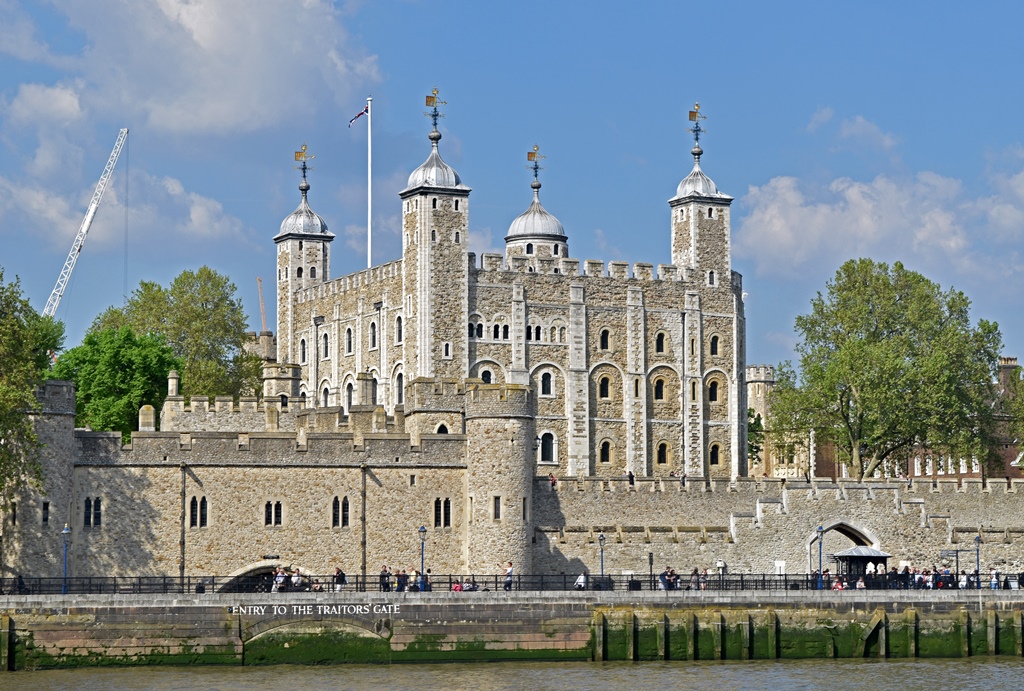
The White Tower and Traitor's Gate
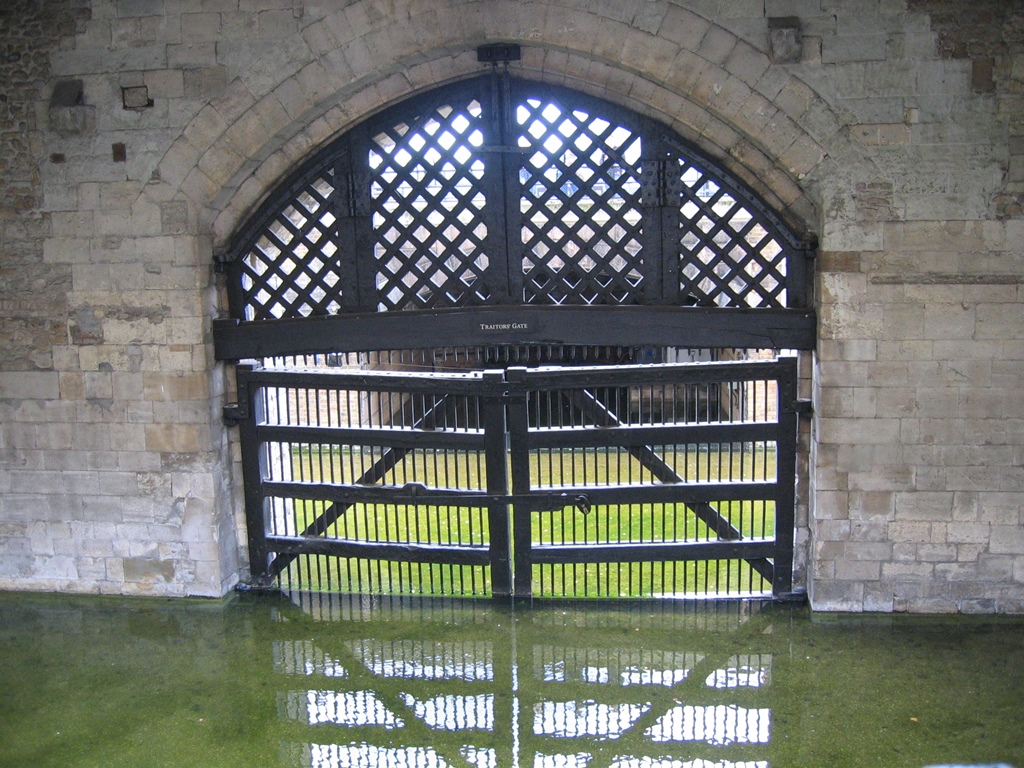
Traitors' Gate
But despite the Tower's notorious reputation, very few prisoners have actually
been executed within the walls of the Tower – executions were generally performed
at nearby Tower Hill, in public. The list of these prisoners is very long, but
among the most well-known are William Wallace, Sir Thomas More, Guy Fawkes and Sir
Walter Raleigh. Only seven prisoners were executed inside the Tower prior to the
20th Century (12 more were executed for espionage during the First and Second
World Wars). The seven were executed within the walls because it was felt the
executions were largely unpopular and could lead to unmanageable situations if
performed in public. Five of the seven were women, including Henry VIII wives
Anne Boleyn and Catherine Howard.
Today the Tower is a popular tourist attraction. Visitors are welcomed and
taken on group tours by members of the Yeoman Warders, who have many stories to
tell. The Yeoman Warders, of whom there are currently 37, are all retired
officers of the armed forces who actually live at the Tower with their families.
They also have many additional duties besides conducting tourists around the
grounds.
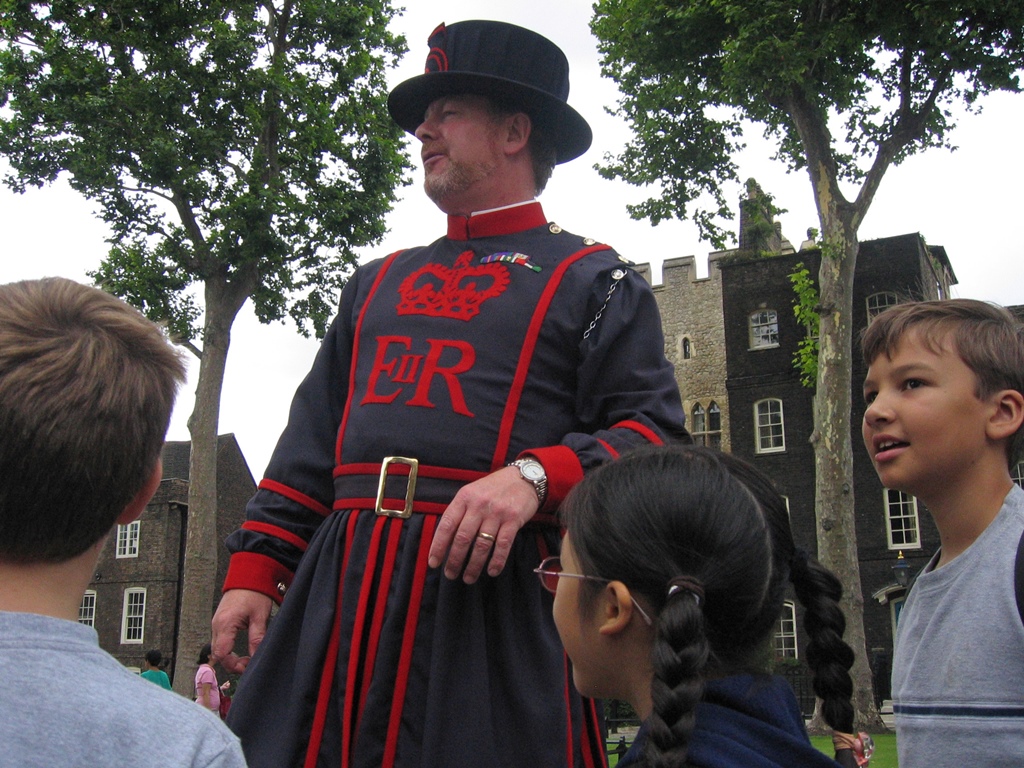
A Yeoman Warder (2005)
Of the many structures within the Tower complex, one is of special interest for many
visitors. This is the Jewel House, which is the home of the Crown Jewels. There is
much to see here, but photography is not allowed. And of course security is
extremely tight.
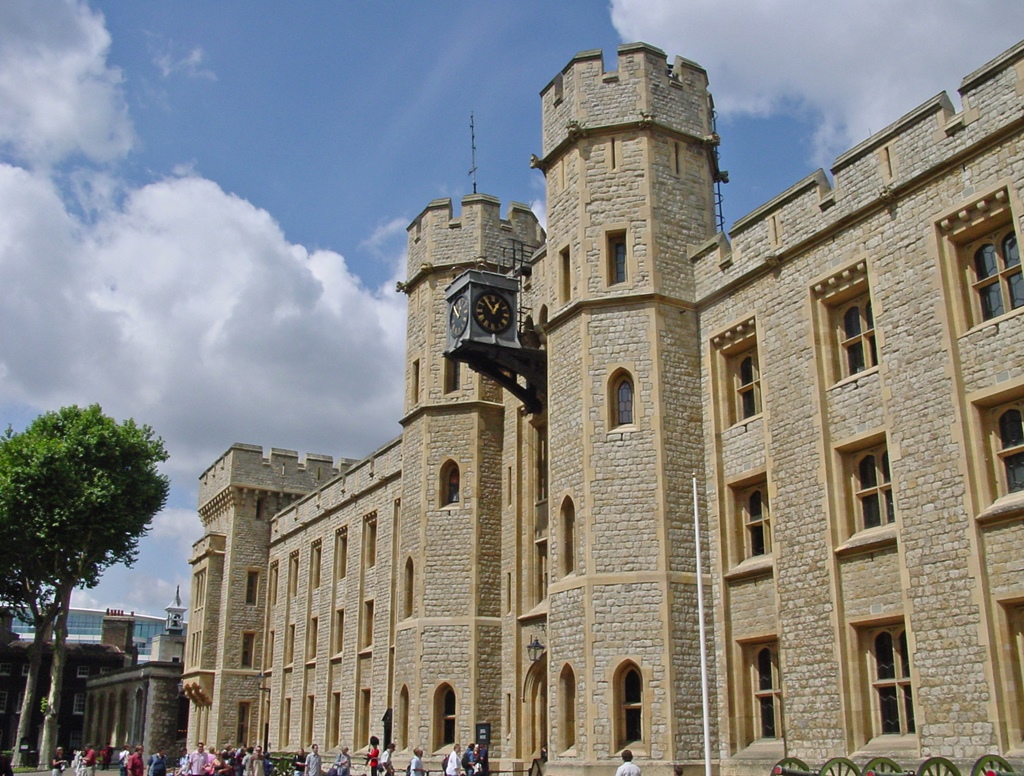
Jewel Tower
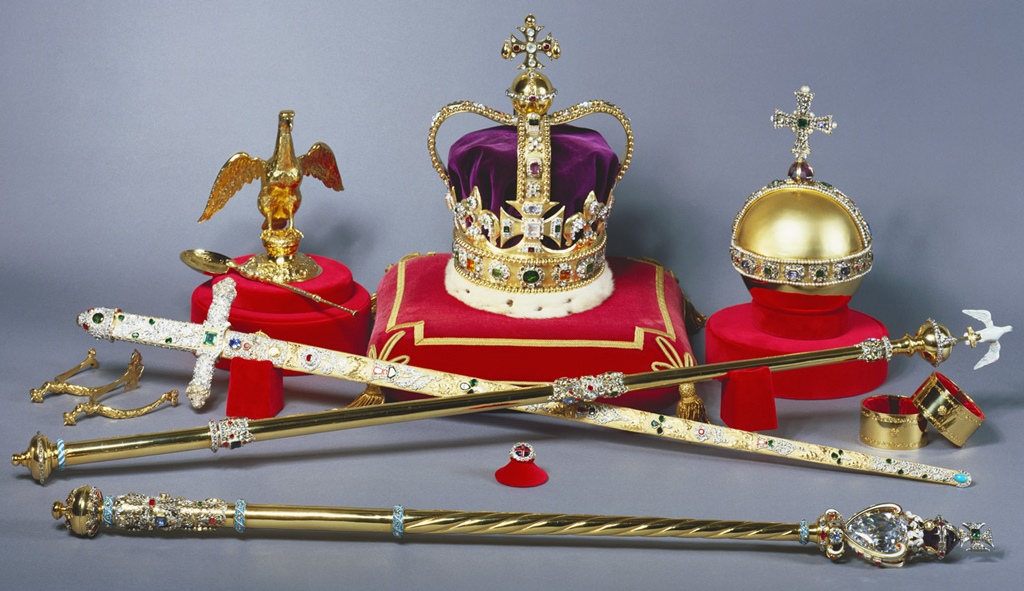
Crown Jewels of the United Kingdom (Royal Collection Trust)
Directing our attention back to the river at this point, we found Tower Bridge to
be looming very close. Tower Bridge is the bridge many people mistakenly think
of when they hear "London Bridge". Tower Bridge is much more impressive to look
at, with two 213-foot Gothic-styled towers that have two levels of traffic between
them. The top level is for pedestrians only, and there are two passageways. The
lower level is for both pedestrian and vehicular traffic, and folds up to allow
tall boats to pass through. Despite the bridge's centuries-old appearance, it was
only completed in 1894. Its central span is 200 feet wide, and each of the two
side-spans is 270 feet long, and is a suspension bridge. The upper-level
pedestrian walkways are 143 feet above the river, which is the limiting height for
boats heading upstream at this point. When the drawbridge is closed, the limiting
height is 28 feet. This was not a problem for our tour boat.
Tower Bridge (0:54)
Shortly after passing under Tower Bridge, we had reached the end of our tour route,
so the boat turned around to begin the journey back to our starting point.
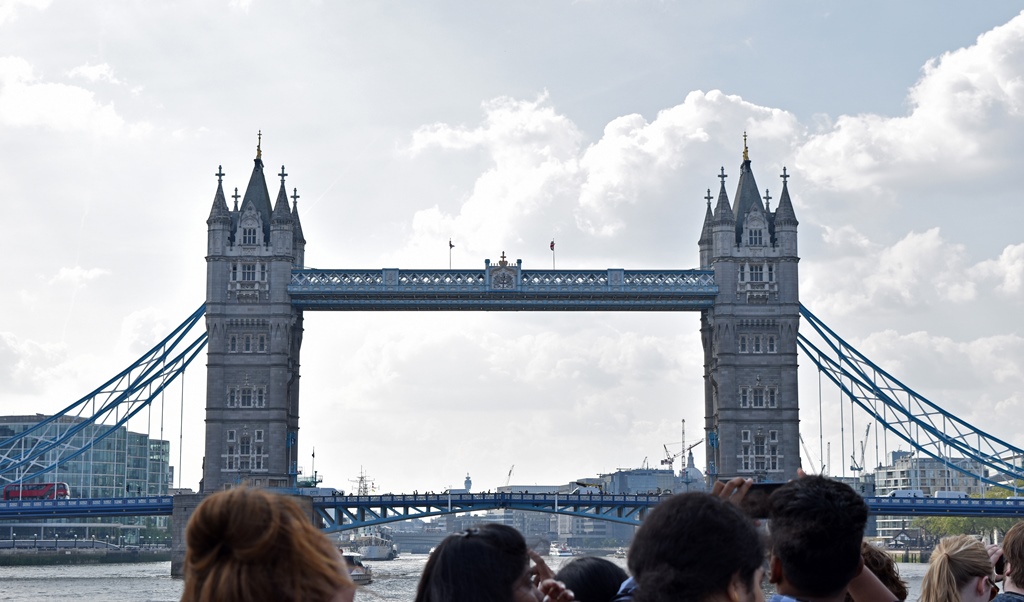
Tower Bridge
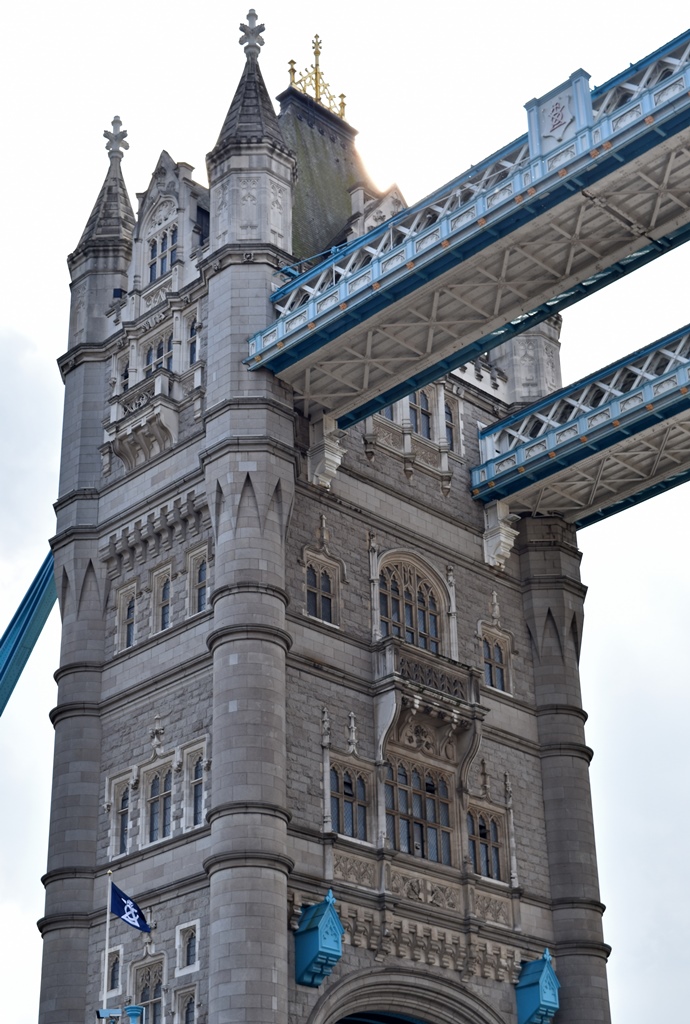
South Tower, Tower Bridge
Heading back, we passed under all the same bridges we'd passed under earlier
and saw much the same scenery. But we saw it all from a different angle, and
noticed some things we'd missed on the way out. One thing that seemed more
obvious from the new angle was the grouping of new architecture with old
architecture.
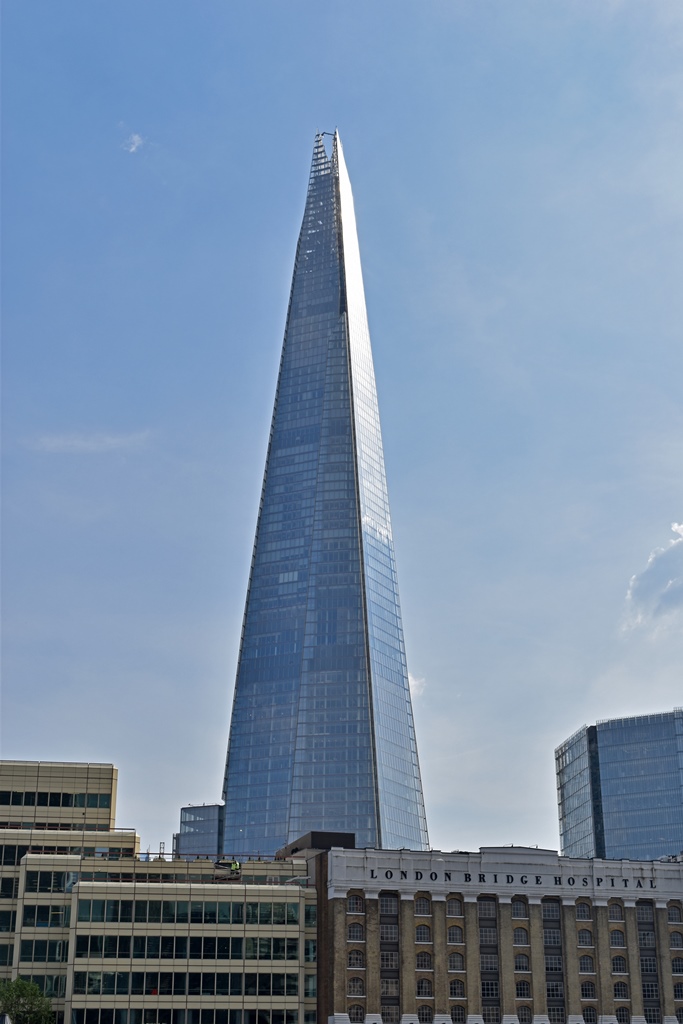
The Shard
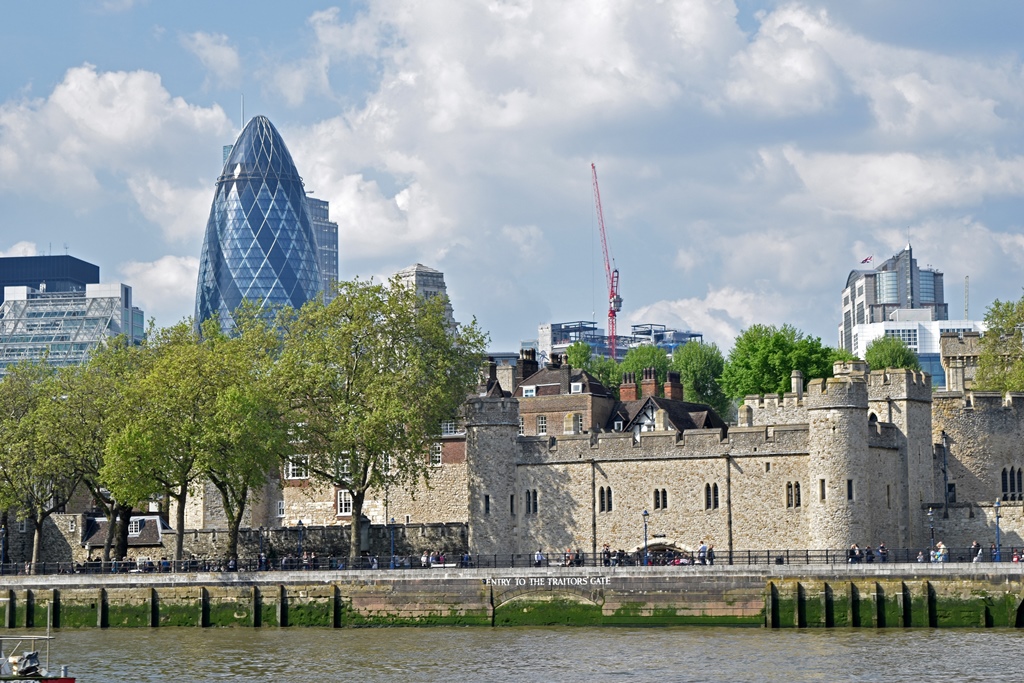
The Tower of London and "The Gherkin"
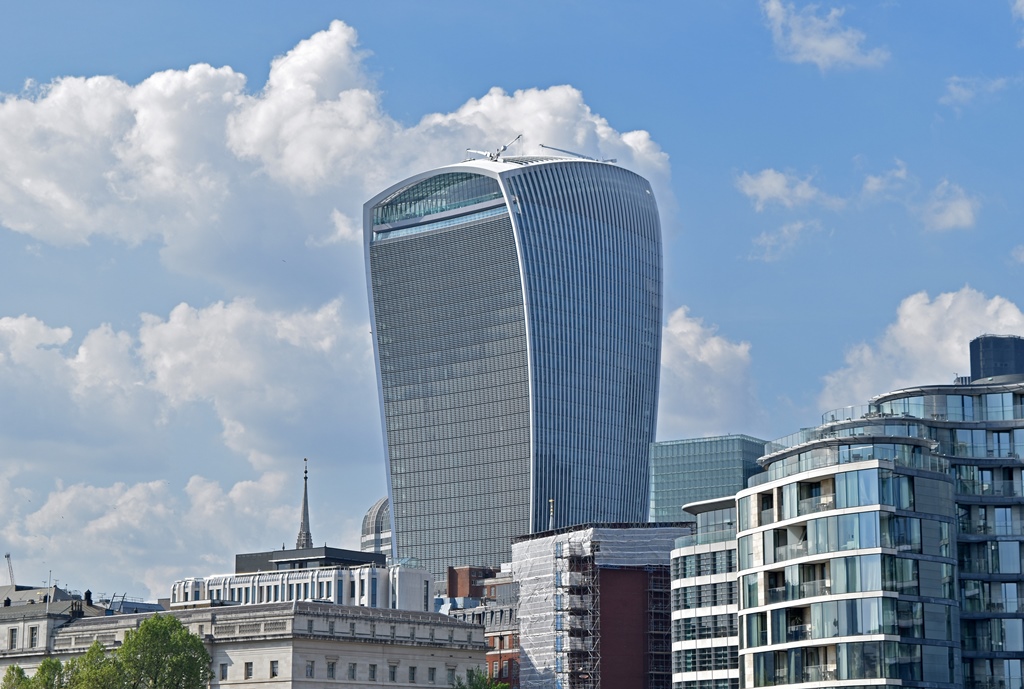
"The Walkie-Talkie"

St. Magnus The Martyr Church
There were also a couple of bridges I didn't mention the first time we encountered
them. The first, upstream from London Bridge, was Southwark Bridge, which was
completed in 1921. At that time it replaced a previous bridge, which dated back
to 1819.
Southwark Bridge
After Southwark Bridge, there was a footbridge called the Millennium Bridge. It
was completed in 2000 (hence the name) but was found to be unstable, earning the
nickname "Wobbly Bridge". It was closed almost immediately and stayed that way
for two years, while technology was thrown at it. It reopened in February of
2002, with its funky motion eliminated. Its south end is close to Shakespeare's
Globe Theatre and the Tate Modern Art Gallery, and its north end isn't far from
St. Paul's Cathedral, making it a popular bridge with pedestrians.
Tate Modern Gallery and Millennium Bridge
We eventually reached the Golden Jubilee Bridges, and finally our starting point,
the London Eye.
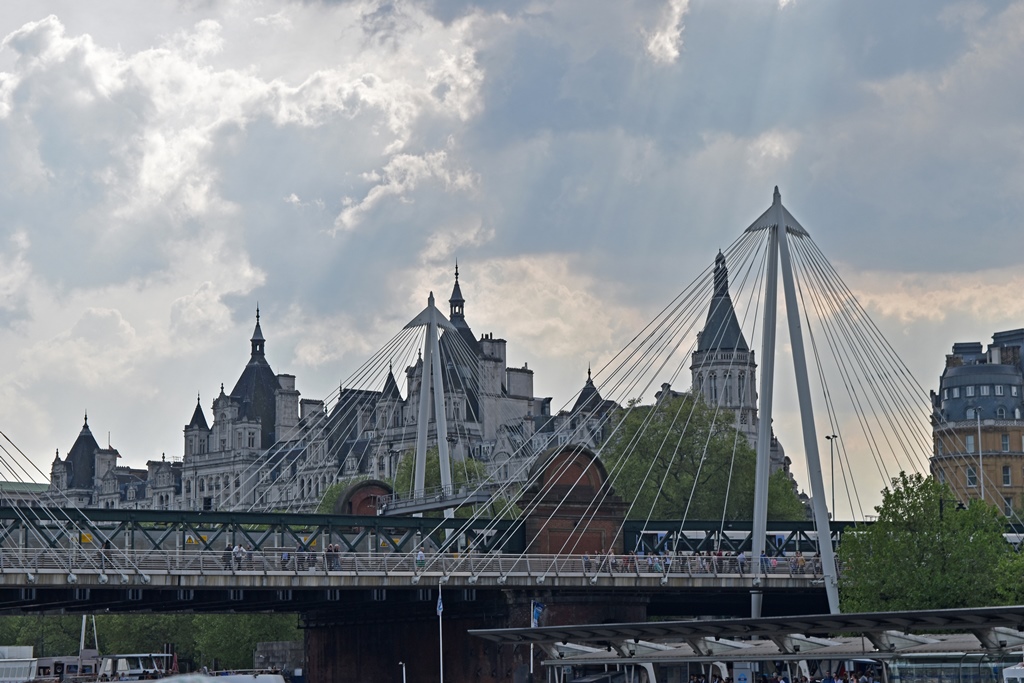
Golden Jubilee Bridges and Whitehall Gardens Building
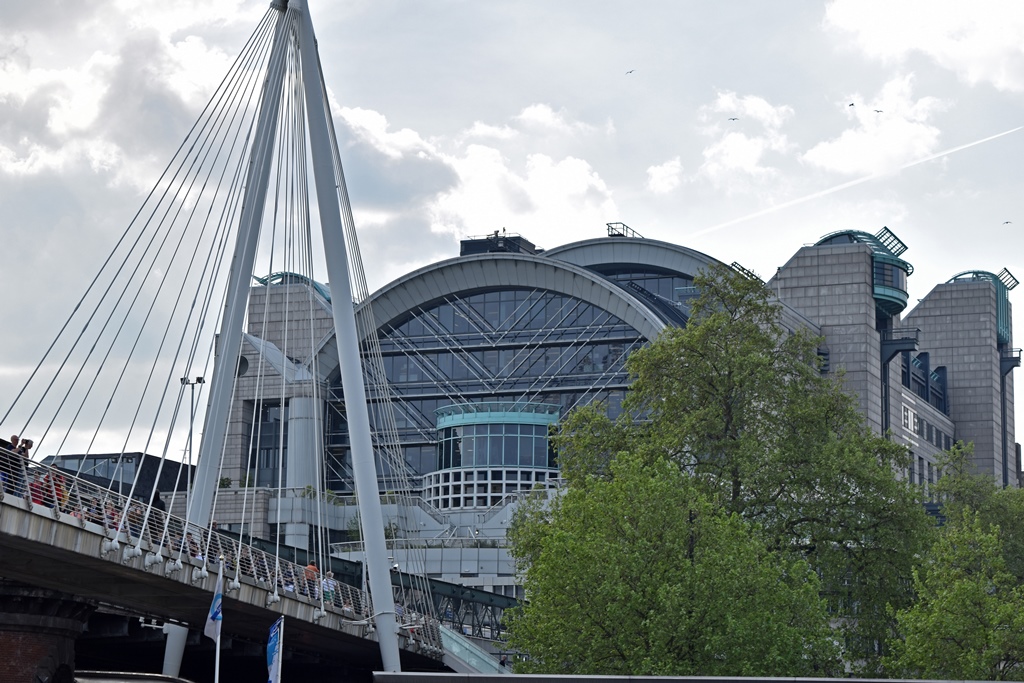
Charing Cross Station and Golden Jubilee Bridges
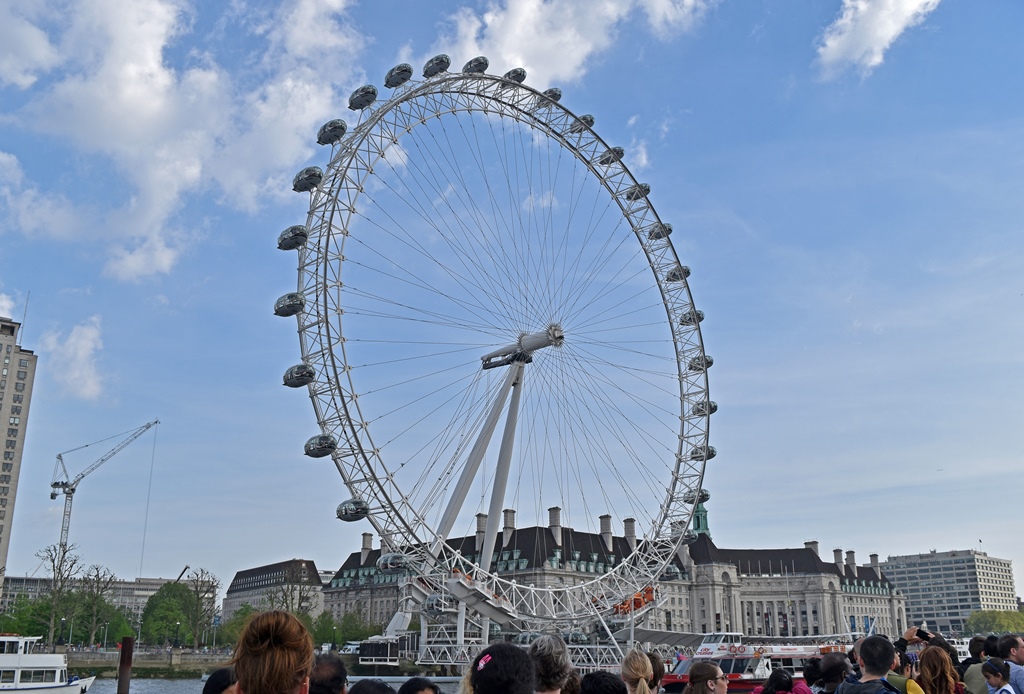
The London Eye
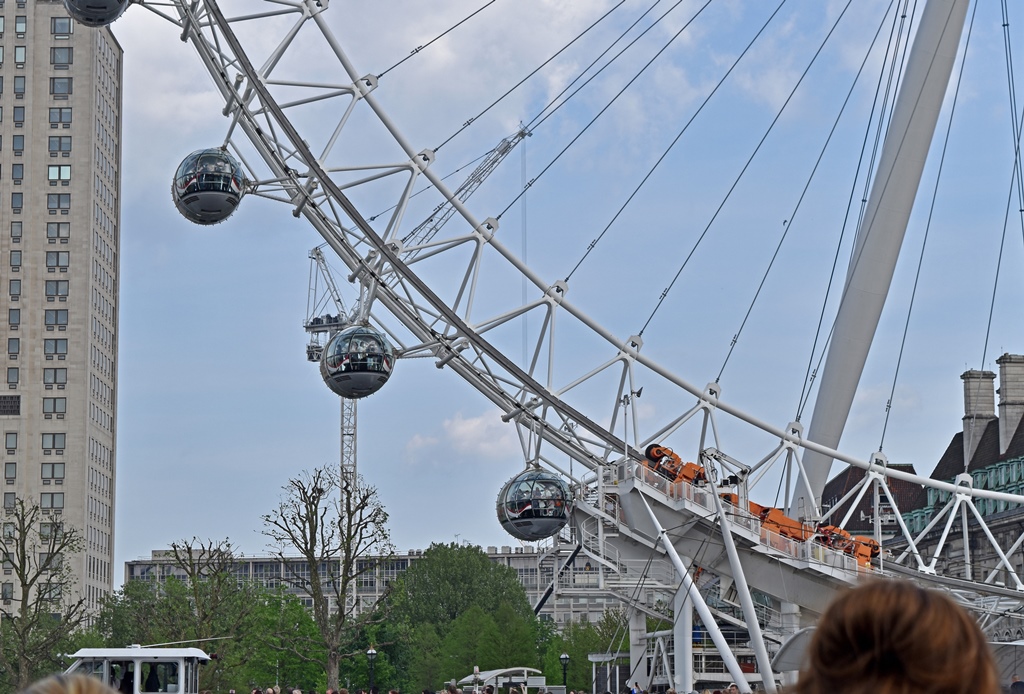
The London Eye
At this point, you may be thinking that we'd already done plenty for our first
day after crossing a continent and an ocean. But we're nothing if not ambitious,
and we had one more thing we wanted to do: a visit to the National Portrait
Gallery.

